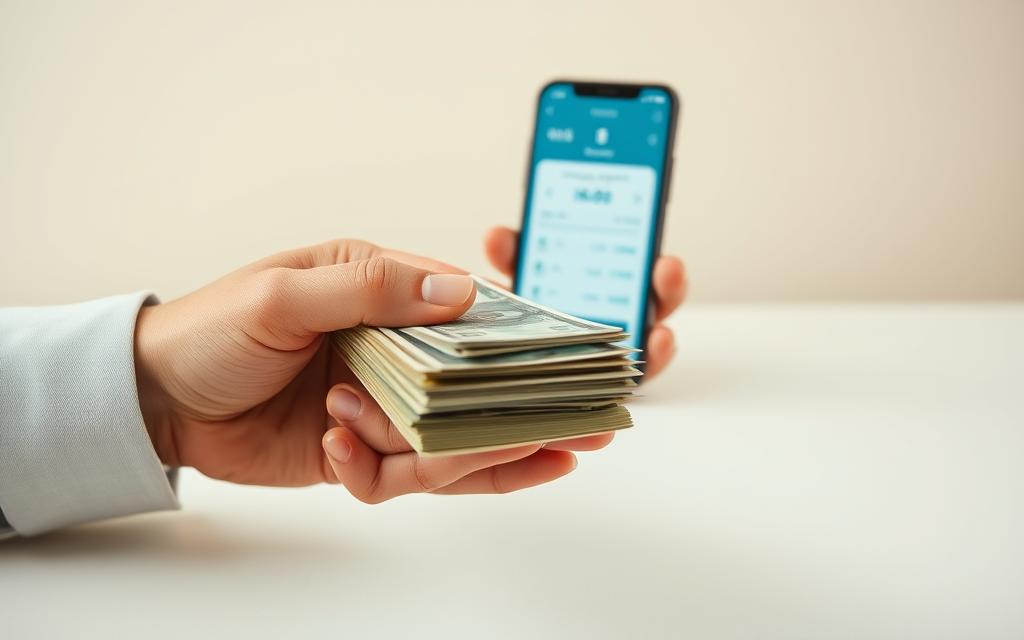The crypto market has seen significant growth and volatility, especially with predictions of continued changes by 2025. Many investors are now exploring ways to turn their digital assets into tangible funds. Understanding the process and timing is crucial to maximize returns and minimize risks.
Converting cryptocurrency to cash involves several methods, each with its own advantages. Popular options include exchanges, brokerages, peer-to-peer platforms, Bitcoin ATMs, and crypto swaps. Each method varies in terms of fees, speed, and accessibility, making it essential to choose the right one for your needs.
Tax implications and regulatory compliance are also critical factors to consider. Consulting a financial advisor can help navigate these complexities. Additionally, evaluating platform security and fees ensures a smooth and safe transaction. With the right approach, converting crypto to cash can be a straightforward and rewarding experience.
Understanding the Basics of Cashing Out Cryptocurrency
Investors often consider converting their crypto holdings to cash for various financial reasons. This process, known as “cashing out,” involves transforming digital assets into traditional fiat currency like USD. It’s a critical step for managing wealth, especially in a volatile market.
What Does “Cashing Out” Mean in Crypto?
Cashing out refers to the act of selling cryptocurrency for fiat money. The IRS classifies crypto as property, meaning every sale triggers tax implications. Whether it’s Bitcoin, Ethereum, or another digital asset, the process involves understanding capital gains and potential liabilities.
Why Convert Cryptocurrency to Cash?
There are several reasons investors choose to cash out. Profit-taking is a common motivation, especially after a significant market surge. Others may need emergency funds or want to rebalance their portfolios. With the 2025 market context in mind, many are preparing for post-bull run scenarios.
Platforms like CoinLedger, with over 500,000 users, simplify tax management for crypto transactions. Consulting services like TokenTax can also help navigate the complexities of short-term and long-term tax rates, which range from 0-37% and 0-20%, respectively.
“Understanding the tax triggers and planning ahead can save investors from unexpected liabilities.”
Whether for profit-taking, risk management, or liquidity needs, converting cryptocurrency to cash is a strategic decision. By staying informed and using reliable tools, investors can make the process seamless and efficient.
How Do You Get Cash from Cryptocurrency Using Exchanges?
Exchanges are one of the most popular ways to convert digital assets into fiat currency. They offer a secure and efficient platform for selling crypto, making them a top choice for investors. However, selecting the right exchange and understanding the process are essential for a seamless experience.
Choosing the Right Cryptocurrency Exchange
Not all exchanges are created equal. Platforms like Coinbase are known for their user-friendly interfaces, while Binance caters to advanced users with robust features. Kraken stands out for its transparent fee structure, making it a reliable option for cost-conscious traders.
Before selecting an exchange, consider the following factors:
- KYC Requirements: Most exchanges require identity verification to comply with regulations.
- State-Specific Rules: Some platforms may not operate in certain states due to local laws.
- Fees: Transaction fees can vary significantly, ranging from $5 to $50 for a $1,000 Bitcoin sale.
Step-by-Step Process to Sell Crypto on an Exchange
Selling crypto on an exchange involves a few straightforward steps:
- Transfer your crypto from your wallet to the exchange address.
- Place a market or limit order to sell your digital assets.
- Convert the proceeds into fiat currency or stablecoins if required.
- Withdraw the funds to your bank account.
For example, selling 0.5 BTC on Coinbase can result in funds being deposited into a Chase checking account within minutes. Always double-check wallet addresses and account details to avoid errors.
| Exchange | Features | Fees (Example: $1,000 BTC Sale) |
|---|---|---|
| Coinbase | User-friendly, one-click sell feature | $25 |
| Binance | Advanced tools, high liquidity | $10 |
| Kraken | Transparent fees, strong security | $15 |
By understanding the nuances of exchanges, investors can confidently sell crypto and access their funds with ease. Always research platforms thoroughly to ensure a smooth and secure transaction.
Cashing Out Cryptocurrency Through Brokerage Accounts
Brokerage accounts offer a streamlined way for investors to convert their digital assets into fiat currency. These platforms provide a bridge between traditional finance and the crypto world, making it easier to manage both portfolios in one place. With features like instant settlements and extended trading hours, they cater to diverse needs.
Using Platforms Like Robinhood or Webull
Robinhood and Webull are popular choices for those looking to sell crypto seamlessly. Robinhood’s instant settlement feature allows users to access their funds immediately after a sale, while Webull offers extended trading hours, providing flexibility. Both platforms are user-friendly, but they differ in their educational resources and interface design.
For example, selling ETH on Robinhood during NYSE hours ensures quick access to your balance. Webull, on the other hand, provides in-depth educational materials for those new to trading. These platforms also offer FDIC insurance on fiat balances post-sale, adding an extra layer of security.
Understanding Spot Bitcoin ETFs
Spot Bitcoin ETFs, like the BITO ETF, provide an alternative to direct crypto trading. With fees ranging from 0.15% to 0.25%, they offer a cost-effective way to gain Bitcoin exposure. Unlike direct trading, ETFs mitigate risks associated with wallet security and regulatory compliance.
However, direct Bitcoin exposure allows for more control over your assets. Tax-loss harvesting within brokerage accounts can also help reduce tax liabilities. Understanding the pros and cons of each option is crucial for making informed decisions.
“Spot Bitcoin ETFs simplify exposure to Bitcoin while reducing the risks associated with direct trading.”
By leveraging brokerage accounts and understanding the nuances of Spot Bitcoin ETFs, investors can efficiently manage their crypto portfolios. Always evaluate fees, security, and tax implications to optimize your strategy.
Peer-to-Peer Platforms for Selling Cryptocurrency
Peer-to-peer platforms have revolutionized the way digital assets are traded globally. These platforms connect buyers and sellers directly, offering flexibility and a wide range of payment methods. Unlike traditional exchanges, they allow users to negotiate terms and choose their preferred currency.
How Binance P2P and Paxful Work
Binance P2P and Paxful are leading platforms in the peer-to-peer crypto trading world. Binance P2P uses an escrow system to secure transactions. When a deal is initiated, the crypto is held in escrow until both parties confirm the payment. This reduces the risk of fraud and ensures trust between buyers and sellers.
Paxful, on the other hand, offers over 400 payment methods, including gift cards and bank transfers. This diversity makes it a preferred choice in regions like Latin America, where traditional banking options may be limited. Both platforms have millions of users worldwide, reflecting their reliability and ease of use.
Benefits and Risks of Peer-to-Peer Trading
Peer-to-peer trading offers several advantages. It provides access to a global market, allowing users to trade with anyone, anywhere. The flexibility in payment options is another significant benefit. However, there are risks to consider.
- Escrow Mechanics: Binance P2P’s escrow system ensures secure transactions by holding funds until both parties confirm the deal.
- Regional Preferences: Paxful dominates in LATAM markets due to its diverse payment options.
- Security Checklist: Always check for verified trader badges and review transaction history before trading.
- Chargeback Risks: Be cautious with gift card payments, as they can be prone to chargebacks.
With over 14 million users, Paxful has become a trusted platform for peer-to-peer trading. However, local meetups carry higher risks compared to platform-mediated transactions. Always prioritize security and due diligence to ensure a smooth trading experience.
Using Bitcoin ATMs to Convert Crypto to Cash
Bitcoin ATMs have emerged as a convenient solution for converting digital assets into physical currency. These machines simplify the process, allowing users to withdraw cash directly. With over 30,000 ATMs across the U.S., they offer accessibility in major cities like New York and Texas.
How Bitcoin ATMs Operate
Using a Bitcoin ATM involves a straightforward process. First, users scan their wallet QR code to link their account. After confirming the transaction, the machine dispenses cash. Most ATMs charge fees ranging from 15% to 25%, depending on the operator and location.
Recent regulatory changes, such as the 2024 FinCEN rules, have eliminated anonymity. Users must now verify their identity through KYC mandates. This ensures compliance but removes the privacy once associated with these transactions.
Pros and Cons of Bitcoin ATMs
Bitcoin ATMs offer several advantages. They provide quick access to money, making them ideal for emergencies. The machines are also widely available, with high density in states like Texas and New York. However, there are drawbacks to consider.
- High Fees: Compared to traditional methods like Western Union, Bitcoin ATMs often charge higher fees.
- Regulatory Factors: Post-2024, stricter regulations have increased scrutiny on these machines.
- Limited Capacity: Some ATMs have caps on withdrawal amounts, restricting larger transactions.
For example, Lamassu ATMs are known for their user-friendly interface, while Genesis Coin models offer advanced features. Choosing the right machine depends on your specific needs and location.
“Bitcoin ATMs bridge the gap between digital and physical currency, but users must weigh the convenience against the costs.”
Whether for regular use or emergencies, Bitcoin ATMs provide a practical way to access cash. Always consider factors like fees, location, and regulatory compliance to make informed decisions.
Tax Implications of Cashing Out Cryptocurrency
Navigating the tax landscape is a critical step for anyone converting cryptocurrency to cash. The IRS treats digital assets as property, meaning every sale triggers capital gains or losses. Understanding these implications ensures compliance and maximizes your returns.
Short-term gains, from assets held less than a year, are taxed at ordinary income rates ranging from 10% to 37%. Long-term gains, for assets held over a year, benefit from lower rates of 0%, 15%, or 20%. Proper planning can help reduce your tax burden significantly.
Understanding Capital Gains Tax
Capital gains tax applies when you sell a digital asset for more than its purchase price. The rate depends on your holding period and income bracket. For example, a single filer earning $50,000 would pay 15% on long-term gains but 22% on short-term gains.
Here’s a breakdown of 2025 IRS brackets:
- Short-Term Rates: 10% to 37%, based on income.
- Long-Term Rates: 0%, 15%, or 20%, depending on filing status and income.
Capital losses can offset gains, with up to $3,000 deductible annually. Tools like TurboTax simplify tracking and reporting these transactions.
Strategies to Minimize Tax Liability
Several strategies can help reduce your tax burden. HIFO (Highest In, First Out) accounting minimizes gains by selling the highest-cost assets first. Crypto IRAs, like those offered by iTrustCapital and BitcoinIRA, provide tax-deferred growth.
“Proper planning and strategic selling can save thousands in tax liabilities.”
For multi-state filers, understanding nexus issues is crucial. Each state has unique rules, and consulting a tax professional ensures compliance. Platforms like TokenTax use proprietary algorithms to optimize your filings.
By staying informed and leveraging these strategies, you can navigate the complexities of crypto taxes with confidence.
Conclusion
Converting crypto to fiat currency involves various methods, each with unique benefits. Bitcoin ATMs provide instant access, while exchanges may take 1-3 days. Brokerages offer the highest security, but peer-to-peer platforms require caution due to potential risks.
With 2025 tax reporting deadlines approaching, investors should plan carefully. Hybrid approaches, like partial cash-outs using multiple methods, can optimize flexibility and efficiency. Always stay updated on post-2024 wash sale rules to avoid penalties.
For a seamless process, consider consulting services like CoinLedger or a financial advisor. Staying informed ensures compliance and maximizes returns in the ever-evolving world of digital assets. Timing and strategy are key to successful conversions.
For more detailed guidance, visit this step-by-step guide.
















